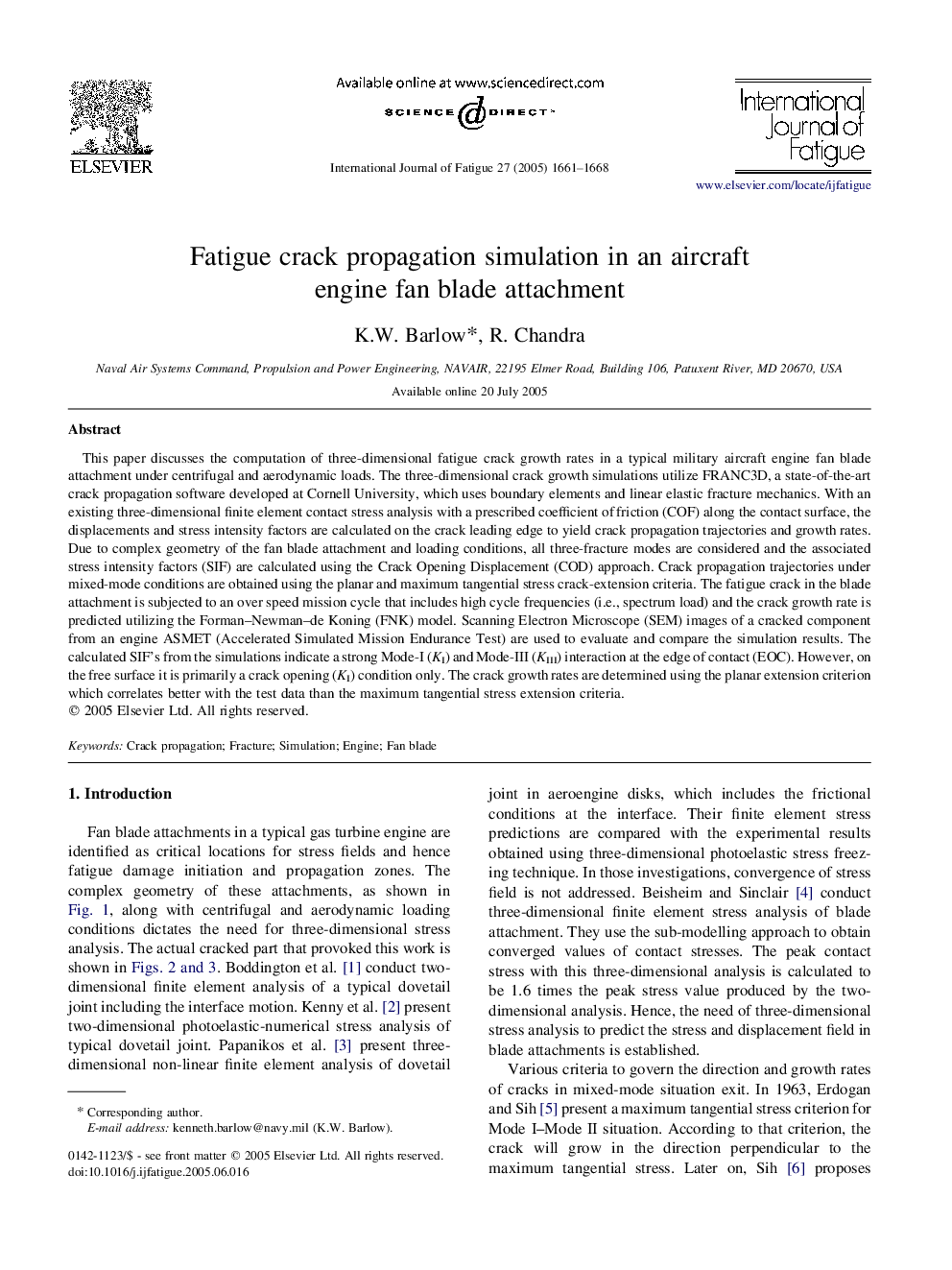| Article ID | Journal | Published Year | Pages | File Type |
|---|---|---|---|---|
| 9703910 | International Journal of Fatigue | 2005 | 8 Pages |
Abstract
This paper discusses the computation of three-dimensional fatigue crack growth rates in a typical military aircraft engine fan blade attachment under centrifugal and aerodynamic loads. The three-dimensional crack growth simulations utilize FRANC3D, a state-of-the-art crack propagation software developed at Cornell University, which uses boundary elements and linear elastic fracture mechanics. With an existing three-dimensional finite element contact stress analysis with a prescribed coefficient of friction (COF) along the contact surface, the displacements and stress intensity factors are calculated on the crack leading edge to yield crack propagation trajectories and growth rates. Due to complex geometry of the fan blade attachment and loading conditions, all three-fracture modes are considered and the associated stress intensity factors (SIF) are calculated using the Crack Opening Displacement (COD) approach. Crack propagation trajectories under mixed-mode conditions are obtained using the planar and maximum tangential stress crack-extension criteria. The fatigue crack in the blade attachment is subjected to an over speed mission cycle that includes high cycle frequencies (i.e., spectrum load) and the crack growth rate is predicted utilizing the Forman-Newman-de Koning (FNK) model. Scanning Electron Microscope (SEM) images of a cracked component from an engine ASMET (Accelerated Simulated Mission Endurance Test) are used to evaluate and compare the simulation results. The calculated SIF's from the simulations indicate a strong Mode-I (KI) and Mode-III (KIII) interaction at the edge of contact (EOC). However, on the free surface it is primarily a crack opening (KI) condition only. The crack growth rates are determined using the planar extension criterion which correlates better with the test data than the maximum tangential stress extension criteria.
Related Topics
Physical Sciences and Engineering
Engineering
Mechanical Engineering
Authors
K.W. Barlow, R. Chandra,
